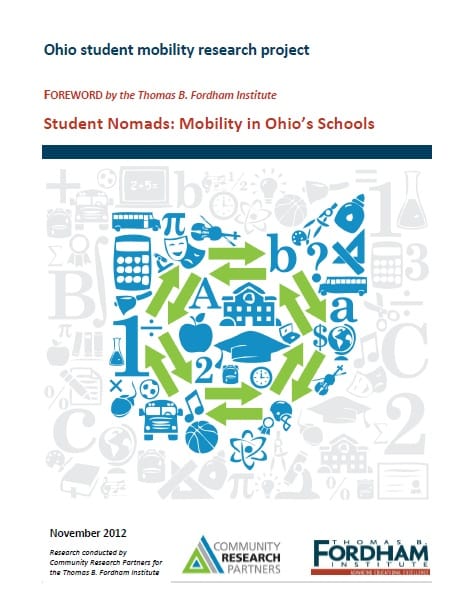Fordham and Community Research Partners’ student mobility report made headlines across the Buckeye State this week. The news reports underscore the significance of this report, as well as the ongoing need to educate the public about the scale and magnitude of student mobility. Below is a recap of the press coverage of the report thus far.
The Columbus Dispatch featured student mobility as front-page news in its Thursday and Sunday editions. The Thursday edition focused on the relationship between serially-mobile students—kids who move two or more times within a couple years—and poor academic achievement, a key finding of the report’s data analysis. Meanwhile, the Sunday edition examined schools that perform well despite having high mobility rates. In particular, the Dispatch reported that some schools keep on chugging even as their schools are churning. A couple educators remarked that student mobility, while a challenge, is also a reality that schools are trying to manage:
- "We’ve come to grips that this [high student mobility] is the way [of life] for us, for better or worse. We have to find ways to make it work for students” - Groveport Madison High School principal Aric Thomas
- “This [high student mobility] ought to be a call of action, a mobilization for a collection of resources for kids in the state” – Reynoldsburg School District superintendent Steve Dackin
The Cleveland Plain Dealer featured the student mobility project in its Friday edition, focusing on the scale of student mobility in Northeast Ohio school districts. Particularly interesting were comments obtained from Tracy Radich, a fifth grade teacher in the Cleveland Metropolitan School District:
- “If it's one move, it's not ideal, but they should be OK," she said. "It's the students that move several times -- and the conditions that cause those moves sometimes -- that affect their ability to achieve at their highest level."
The Akron Beacon Journal’s chief editorial writer wrote about “Nomad Mary,” a prototypical serial mover whose academic progress is marred by changes in schools. This student bounces around from school to school, often at the whims of powers outside her control. The Beacon Journal ends on a somber note, writing that Fordham’s research “found ‘nomads’ in all types of districts, the prevalence ‘considerably greater than most of us appreciate or fully understand’ and verging on the epidemic in inner-city schools.”
Finally, Gongwer, the state’s leading political and legislative media outlet, obtained comments from state educational leaders, who weighed in on Fordham’s report.
- “It is reports like this one that verify what department employees hear anecdotally. The data contained in the report enable the Department of Education and educational institutions and organizations to create strategies and policies to help mobile students be more successful in schools.” - Ohio Department of Education acting superintendent of public instruction Michael Sawyers
- “Most urban school districts have problems with high student mobility. Cincinnati Public Schools is no exception, although we work with both our educators and our community partners to minimize the academic disruption for our students. . . . We believe that effectively addressing student mobility and its underlying causes will take a community commitment and approach.” –Cincinnati Public Schools superintendent Mary Ronan
To read the report, click on the image below.

